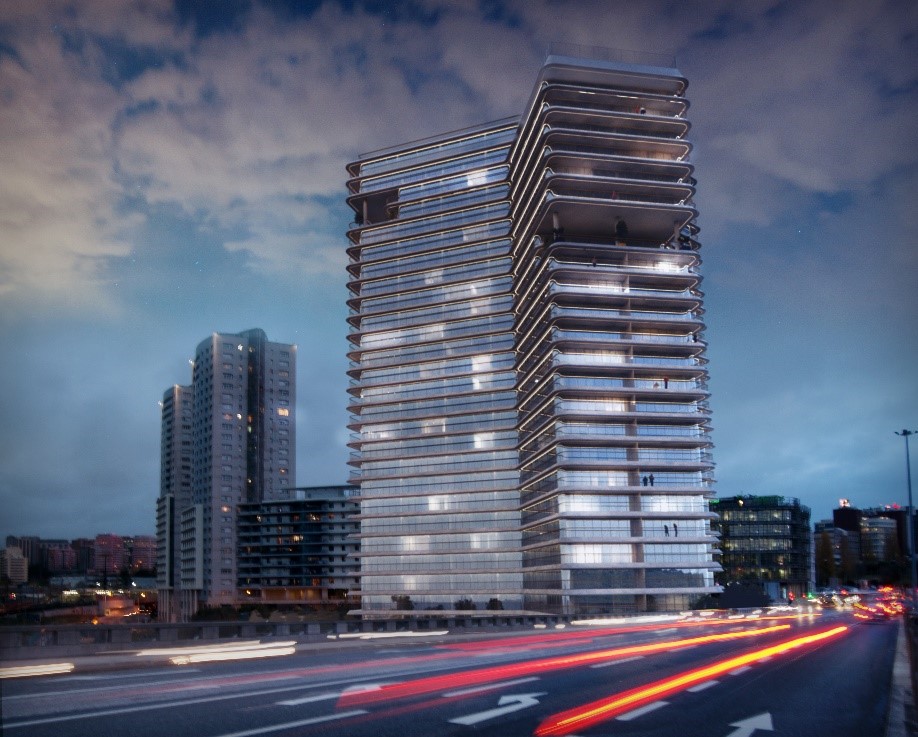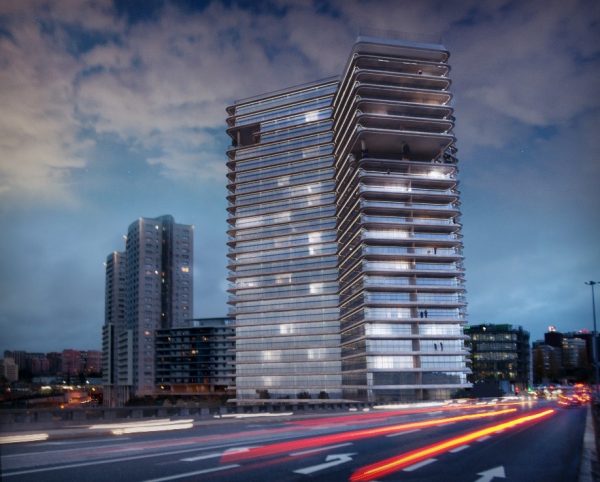
Lessons Learned from Emerging Build to Rent Markets in Europe
Europe as a continent has always been united in diversity and the markets for Build to Rent (BTR) follow the same path.BTR has grown substantially across the continent while showing the highest resiliency to become the second largest of all real estate sectors in Europe with a total investment of euro 46bn in 2020.
In spite of strong growth, BTR markets across Europe are at different stages of development. Even as some markets are fully established, others are still emerging, while others remain relatively embryonic.
Why is the BTR sector growing faster in some markets than others? What conditions are required for the BTR sector to overcome the barriers to institutional investment and reach the maturity of established markets such as the US and Germany?

Figure 1 Infinity Tower. Residential development in Lisbon, Portugal. Developer: Vanguard Properties. Architect: Saraiva + Associados
The experience from new BTR markets across Europe where the sector has experienced contrasting development indicates that the growth of the sector depends on the ability of public and private sectors to work to together to tackle an array of conditions and viability challenges specific to the new model, including:
- Lack of information and comparables by which to assess the viability of BTR investments.
- Rental legislation does not provide the flexibility that the BTR model requires.
- Planning controls and obligations are geared towards a residential open market sales model and do not provide the certainty that institutional investors require.
- Building regulations and residential designs which often do not reflect the specificity of a BTR product and the requirements of its operational model.
- Bank financing is restricted due to the scale of assets, absence of historic performance data and inadequacy of financial covenants to assess the viability of BTR projects.
- Equity requirements for the development of BTR projects are high and should also be invested upfront often subject to planning and financing risk.
- Lack of alternative funding sources able to take upfront planning risk and fund the gap in the capital structure between developer’s equity and bank debt.
- Absence of operators with experience, scale with and staffing suited to the specificity of the operational model and service requirements of BTR.
- Residual Land Values – in most locations, the residual land value is higher for a sale-model than a BTR model. In main urban centres it is the high price of the lots and in secondary locations is the likely low rents that hinder the development of new projects.
For the BTR sector to grow in new markets, the barriers to investment described above need to be addressed. The experience from more established BTR markets across Europe indicates that the following measures need to be implemented:
- The public sector needs to create the conditions for BTR markets to flourish. The regulatory framework needs to appreciate the nuances of BTR, creating favourable planning conditions, adapting building regulations and housing legislation to recognise diversity of tenure. In the initial stages, a more active involvement by the public sector is often required through the provision of additional fiscal subsidies and direct investment in the financing of new projects.
- Lenders need to tailor loan structures and financial covenants to the economics of the sector. Often, there is a need to access better data on which to base decisions about financing new BTR projects, particularly in respect of revenue assumptions and operating costs. This makes the case for cooperation at sector level in collecting and releasing data, not least among those investors and lenders who are amassing that data as a side-effect of investment.
- Investors by their turn must provide alternative financing structures to respond to the need of projects before planning is obtained, mitigate commercial risk and fill the space in the capital stack that bank finance cannot.
- The property sector, including developers, operators and design consultants need to design and build projects adapted to the specifics of the BTR model with the ability to provide the customer service required by residents and adapt to the evolution of their preferences over time.
- An adequate legislative framework needs to be put in place to increase the liquidity of secondary capital markets which can absorb assets once stabilized and generate long-term stable incomes to institutional yield investors.
The growth of the BTR sector in new markets across Europe requires a supportive regulatory environment, tailored private sector funding and bespoke design solutions that ensure the economic viability of private development projects and the public benefits of a dynamic rental market and increased housing supply.
Author:

Bruno Lobo is the co-founder and managing partner of S+A Capital, a global multidisciplinary advisory and investment firm focused on design-led real estate and infrastructure projects.
He holds a PhD from Columbia University in the City of New York and a MArch from the Technical University of Lisbon. Bruno is a regular lecturer at industry conferences and academic institutions and publishes periodically in academic journals and industry publications.
About S+A Capital: https://www.saraivaeassociados.com/